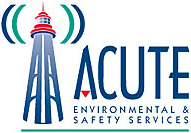Hazards involving excavations, in particular trenches, can lead to serious incidents involving workers at construction sites. Workers can be critically injured or die in cave-ins. Many cave-ins occur on small jobs of short duration, such as water, gas, electrical and sewer line connections.

Prerequisites: None
For this course we can conduct the training at your facility or at our own training facility, whichever will suit your needs best. There are some great benefits to both approaches. By completing your training on-site we can save your staff travel time, by completing your training at our facility you can benefit from our spacious training room, our state of the art hands on training space and full use of our break room.
Program Content
Hazards involving excavations, in particular trenches, can lead to serious incidents involving workers at construction sites. Workers can be critically injured or die in cave-ins. Many cave-ins occur on small jobs of short duration, such as water, gas, electrical and sewer line connections.
Employers, supervisors and workers must follow the requirements set out in the Occupational Health and Safety Act (OHSA) and Regulations for Construction Projects.
This training program has been designed for those that excavate or work in trenches or excavations deeper than 1.2 metres (4 ft.).
The course is designed to provide participants with a comprehensive overview or legislative and practical considerations for safe and legislatively compliant excavation and trenching.
Training program topics include:
Excavation Hazards
Plan before you dig – Obligations under Construction Regulations
Reasonable precautions under the Occupational Health and Safety Act
Duties of workplace parties
Notifications
Determining soil types
Soil strength
Wall stability
Marking and location utilities
Adjacent structures
Working safely with and around heavy equipment
Public safety and work area protection
Prefabricated protective support systems
Sloping and Shoring
Trench boxes
Emergency procedures
You will learn by:
Classroom interaction with experienced instructors
Exploring legislative requirements
Detailed handouts, videos and quizzes
Who should enroll in this training program?
Employers, supervisors and workers who engage in excavation and trenching.
ACUTE was established in 1995 when a group of experienced environmental contractors took their knowledge and experience gained from years of field work to create a company that would ultimately serve its clientele.
By providing comprehensive health and safety training, consulting and on-site safety services. Early in ACUTE’s history we completed a series of large-scale environmental projects such as decommissioning of Great Lakes lighthouse Fresnel lamps.
Which involved the removal of substantial quantities of toxic liquid mercury from lamp ballasts and contaminated surfaces. Projects such as these demanded very detailed safety and logistics planning and served as the primary catalyst for ACUTE’s rise.
To becoming a leader in health and safety services for Canadian workplaces. Health and safety training soon became and remains to this day ACUTE’s premier area of service.
To further strengthen our safety training services we have established one of the province’s best worker training facilities to complement in class training with hands-on practical competency testing.
© 2025 coursetakers.com All Rights Reserved. Terms and Conditions of use | Privacy Policy